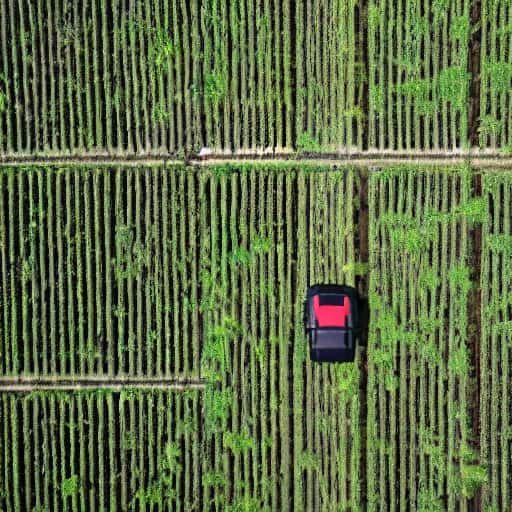
Drones in Agriculture
There’s a lot of hype around drones right now. But those flying robots are being put to good use in other fields as well, like agriculture. In fact, drone technology is being used in more and more ways when it comes to farming. Aerial drones can be used for crop inspections, mapping, monitoring growth, collecting data and much more. They’re a quick, safe and cost-effective way to monitor crops; especially when fields are spread out over a large area or farmland is difficult to access. Drones can also be equipped with special sensors that allow farmers to collect data about their crops in new ways. Keep reading to find out how drones are used in agriculture and learn about the different types of drones that can be useful for farmers.
Crop Inspection
When crops are growing, farmers need to monitor them regularly. This helps them stay on top of any problems with their plants and take action before the problem becomes serious, when it’s easier to fix the issue. If a farmer spots a disease or insect infestation, or damage caused by weather, they can act immediately to prevent these issues from causing significant damage to their plants. Aerial drones can be used to inspect crops from the air. This can help farmers spot issues with their plants that might not be visible from the ground. They can easily fly their drone over fields to check on their crops and inspect them from above. There are different types of drones that are useful for crop inspections like Fixed-wing drones. These can fly higher than other types of drones and travel longer distances, making them ideal for crop inspection. Drones in Agriculture.
Data Collection
Farmers are increasingly collecting data about their crops and the environment they’re growing in. Data can help farmers make more informed decisions; it can also help them better understand their crops, which can lead to improvements in growing conditions and yield. Drones can collect a variety of different data, including temperature, humidity, soil moisture, the amount of sunlight a crop receives and more. And when farmers use drones to collect data, it’s often easier and less time-consuming than collecting data from the ground. Drones can gather data about a crop’s health by flying over fields and collecting information about the plants’ size, color and growth stages. This can be helpful for farmers who want to track their crop’s growth throughout the season.
Monitoring and Growth Monitoring
As crops grow, they change in many ways, including in the amount of sunlight they receive, the amount of water they use, and the amount of carbon dioxide they emit. Drones can be used to monitor these changes over time. Farmers can collect data from their crops at specific times during the growing season. This can give them a better understanding of how their crops are developing over time. This data can help farmers figure out whether changes in weather, soil or other factors have had an impact on their crops. It can also help them identify issues sooner than if they were only monitoring their crops on the ground.
Mapping
Farmers use mapping software to create an aerial view of their fields and keep track of where their crops are located. They can use drones to get a bird’s-eye view of their fields, which can make it easier to create a map. Drones can fly over fields and collect images and other data that can be used to create a map. Some drones can be outfitted with cameras to help farmers map their fields. Others come with software that allows farmers to create a map automatically. Drones can also be used to keep track of crops that are ready to be harvested. This can help farmers know when to harvest their crops and when the produce is ready to be picked.
Drones to Harvest Crops
Farmers have been using tractors to harvest their crops for years. But now, some are using drones in agriculture to harvest crops as well. Some drones are designed to lift and drop off equipment. Others can collect data about crops, similar to how other types of drones are used. Some farmers are using drones to automatically pick their crops. There are different systems available, including strawberry harvesters, broccoli harvesters and lettuce pickers that use autonomous drones. Growing plants involves a lot of water, which can be challenging in areas with water shortages. But with the help of drones, some farmers have found a way to use less water while growing better crops. Drones can be used to apply water to crops precisely, which can help farmers save water while ensuring their crops get the water they need. This can be helpful when there’s a drought and water is limited.
Bottom line
Drones are a useful tool for farmers. They can be used for crop inspections, data collection, monitoring and growth monitoring, mapping, and to harvest crops. Drones can help farmers save water and other resources while growing better crops. However, drone technology is fairly new, so it’s important to keep in mind that these devices aren’t a one-size-fits-all solution. Farmers should carefully consider the best ways to use drones in their operations, and they should be mindful of potential regulations surrounding the use of drones in their area.
Want to learn more? Here are 6 ways Drones are changing agriculture.
Visit us at https://mrdroneguy.com
